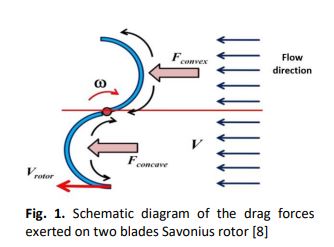Experimental Investigation of the Savonius Turbine for Low-Speed Hydrokinetic Applications in Small Rivers
DOI:
https://doi.org/10.37934/arfmts.94.2.2946Keywords:
Savonius turbine, wind tunnel, water channel, power, hydrokinetic, experimentAbstract
The current study aims to investigate the power performance of 2-bladed and 3-bladed Savonius turbine rotors in a water channel to simulate a low river flow speed. The results were compared to those obtained in a wind tunnel under the same dynamic flow conditions. The comparison was made to determine the turbine characteristics in terms of their power performance when operating in different fluid mediums. The Reynolds number was set to 90200 in both cases, corresponding to an equivalent water flow speed of 0.59 m/s and a wind speed of 10 m/s, respectively. The low water flow speed tested in the water channel represents a narrower and shallower river, commonly found in rural areas of developing countries. The maximum obtained in the water channel was 0.0070 for the 2-bladed rotor and 0.0053 for the 3-bladed rotor at λ = 0.16, respectively. The difference in maximum obtained in the water channel compared with the wind tunnel was 5.7% for the 2-bladed rotor and 22% for the 3-bladed rotor, respectively. Despite being tested in different fluid mediums, the turbines in this study performed similarly, with the 2-bladed rotor outperforming the 3-bladed rotor. The results show that the turbine’s performance is independent of fluid mediums, as both have demonstrated a similar trend. Therefore, the results for the turbine tested in wind or water medium should be applicable in both conditions and can be used in a practical application.
Downloads
































